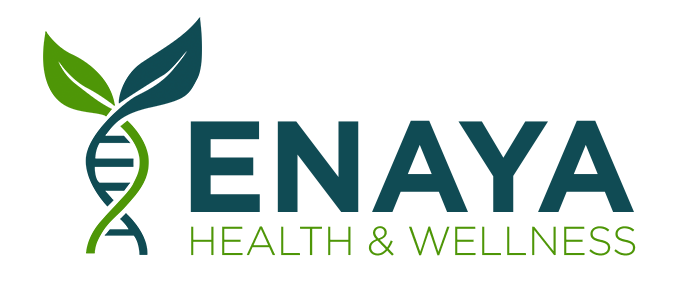High blood pressure.
We hear those three words all the time. And unless you have high blood pressure, you probably don’t think about it too often. Maybe during occasional check-ups, while sitting in the doctor’s office, breathing nervously as your arm weakens beneath the Merciless Inflating Cuff. Maybe… But what we don’t all know is that high blood pressure (also known as hypertension) is pervasive, affecting one in three adults in the U.S. alone. It’s also an invisible, silent killer: if left untreated, it can lead to more serious health conditions, such as coronary artery disease, stroke, heart failure, peripheral vascular disease, vision loss, and chronic kidney disease.
How is hypertension commonly treated?
The conventional medical approach for treating hypertension mainly looks like this: the Merciless Inflating Cuff detects a patient’s high blood pressure, and if the high blood pressure continues, the doctor prescribes medication to the patient. Sure, these medications are effective at lowering your blood pressure, and there is room for them in medical practice, but they’re merely patchwork. A bandaid over a symptom. A short-term solution to a deeper problem that will continue to fester, pressuring doctors to increase your medication dosage or to prescribe more medications altogether.
Here’s what you need to remember about hypertension: it is actually not a disease in and of itself. Rather, it is a symptom that your body develops as a way of screaming “something is wrong with me!” There is an internal imbalance. And a medication regimen that only increases its dosage with time cannot restore your body’s imbalance. If anything, it can sever your quality of life, causing major nutritional deficiencies as well as other adverse side effects.
So how do functional medicine practitioners treat hypertension?
Practitioners of functional medicine are the Sherlocks of disease. We slip into our white coats, tip down our specks, and ask the hard question: why? Why is my patient’s blood pressure suddenly rising? What is happening inside the body to cause this symptom? How can we restore the body’s balance and eradicate this dysfunction forever? Because we’re not interested in managing your symptoms; we want to cure them altogether. And with our patient-centered approach, we study each individual to determine the reason for his or her hypertension.
And the reasons are many. You may develop high blood pressure because of long-term nutritional deficiencies. Or maybe your body is silently battling a bacterial or viral infection. Maybe you have heavy metal toxicity, hormone imbalance, or you’ve compromised your detoxification pathways. Two people with the same symptom, like hypertension, may have developed it for different reasons. Be sure to consult a practitioner whose can determine the underlying cause of your disease before quickly prescribing medications — someone who can uncover your unique why and develop a unique treatment plan whose end goal is to grant you a life free of disease and medication.
So what can I do now to avoid hypertension?
As the saying goes, an ounce of prevention is better than a pound of cure. So what are the best tips to help you avoid high blood pressure? They can be divided into two camps: dietary choices and nutritional supplements. Let’s delve into the details.
FOR A DIET THAT PREVENTS HIGH BLOOD PRESSURE
Nourish yourself at every meal with straight-from-nature food choices. That means choosing foods that your great-grandparents recognize. Foods with short ingredient lists and ingredients that your second grader can read and understand. That means skipping out on the drive-thru egg sandwich and gas station chocolate muffin… because, though convenient, these highly processed foods are devoid of the nutrients your body needs to regulate your blood pressure (they do quite the opposite, actually).
Instead, opt for a diet rich in fruits, vegetables, nuts, and seeds. And forget what you’ve been told about low fat diets. Break away from the 90’s fat-free food boom and bump up the fat grams with foods rich in omega-3 fatty acids. That includes olives, olive oil, flax seeds, walnuts, wild caught fish, and avocados. And for magnesium-rich foods, incorporate more leafy greens in your diet, more dark chocolate (at least 85% dark), more figs, almonds, bananas, avocados, black beans, and pumpkin seeds. Lastly, get in more potassium-rich foods: coconut water, spinach, sweet potatoes, pomegranates, wild caught salmon, bananas, and avocados.
SUPPLEMENTS THAT PREVENT HIGH BLOOD PRESSURE
Magnesium
Magnesium helps relax blood vessels and helps lower blood pressure naturally. Take a good quality of magnesium citrate or magnesium glycinate 500 mg per with or without food.
Potassium
Potassium helps to lower blood pressure by balancing out the negative effects of salt. If you are not getting enough potassium through the diet, take a potassium supplement.
Co Enzyme Q 10
This is an antioxidant that is very important in supporting heart health and helps lower blood pressure. Take 300 mg per day with or without food.
Omega 3 Fatty Acids
Studies show that fish oil containing EPA and DHA types of omega 3 fatty acids reduces inflammation in the arteries which helps lower the blood pressure. Take high quality Fish oil 1000 mg per day with food
Garlic
An active ingredient in garlic, allicin has been shown to lowers blood pressure and helps with decreasing excess LDL particles as reduce plaque formation. Take between 300 mg to 600 mg with food to lower blood pressure.



Recent Comments